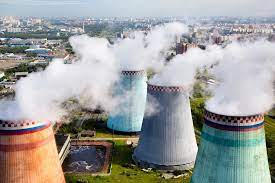It is often thought that having nuclear reactors for energy production is unreliable, unsafe, and requires excessive manpower. Where did these ideas come from? have we ever considered the operational aspects of nuclear power? And how is it produced?
The answers to these questions are not commonly known to the general population, and therefore it is necessary to try to debunk such myths about nuclear reactors so that we may achieve their true potential for the greater good. Before diving into the nitty gritty of nuclear energy’s true potential, it is essential to understand the basic mechanism of nuclear reactions. It is quite understandable that it may not be easy for common people to make great sense of the process, but it is pertinent to identify and know the process.
First, uranium called “yellowcake,” a substance most important for nuclear energy, is mined from the region of Dera Ghazi Khan in Pakistan. It is also essential to know that the amount of uranium-235 in yellowcake consists of only 0.7 percent. The natural uranium found is mainly not enriched. The uranium-235 used in operating nuclear power plants is enriched due to the type of nuclear power plants we have in Pakistan. The plants are light water reactors for which enriched uranium is required. The process of enriching uranium is done through a centrifugal process. The centrifugal process is carried out in a gaseous form that separates uranium-235 from the ore. The amount of enriched uranium-235 required in nuclear power plants for energy production is 4-5 percent. Furthermore, the enriched uranium is further fused with neutrons when it is put in the core of the nuclear reactor. When coming into contact with uranium-235, neutrons start a chain reaction of multiplication called the fission process. This fission process is further a source of energy production, ultimately leading to the production of clean electricity.
Second, having gone through these processes, the nuclear energy produced in Pakistan is around 3530 megawatts, with a total installed capacity of six nuclear power plants. Two power plants are in Karachi called KANUPP II and III, and the other four plants are in Chashma called C1, C2, C3, and C4. Given the current situation of nuclear power plants in Pakistan, it is also vital to understand the inception of nuclear power production. The first ever nuclear reactor installed in Pakistan was the PARR-I reactor, which was installed in Islamabad in 1965 by America for research purposes. This initiative led to the establishment of Pakistan’s first nuclear power plant, KANUPP I, in Karachi. The KANUPP I was dismantled a few years back after completing its life cycle.
Third, the pros of nuclear energy are comparatively more than their cons. Although the construction of a nuclear power plant can be costly, the safety and security of nuclear power plants can necessitate stringent safeguards. But the availability of nuclear fuel and the dumping process appear to be minor in comparison to the benefits. Nuclear power plants, once fully operational with advanced technology and materials, will not likely require any technical or operational maintenance for almost 2-3 years. It will keep on producing clean and cheap energy, making it a reliable energy source with zero carbon emissions. The energy produced is high in density, meaning that the energy released in the process of a nuclear fission reaction is ten million times more energy released than the amount of energy released in the process of burning fossil fuels.
Considering the numerous benefits of nuclear energy irrespective of the small number of cons. It is pertinent to invest in nuclear energy for better and cleaner energy. Nuclear energy is not only an answer to cheap energy and environmental issues, mainly global warming, but also a key prospect for solving extensive social issues. Pakistan needs to stay focused on its goal for the year 2050 to provide 40,000 MW of energy. Nuclear energy is the way forward for the already dire situation of the energy crisis in Pakistan. This 2050 plan will not only address the energy deficit, but it will also serve as a means of economic sustainability.
Nuclear energy, with its pros and cons, also has multiple peaceful applications. Nuclear energy is used in multiple areas related to health, agriculture, industry, food preservation, water mining, and security. Not diving into detail about every application of nuclear energy, health is one key area where nuclear energy is put to the fullest use.
Under the Pakistan Atomic Energy Commission (PAEC), 19 cancer-related hospitals are operating in Pakistan. According to the PAEC annual report of 2018–2019, some 38, 457, and 40,797 cancer patients were registered in different cancer hospitals all around Pakistan, respectively. The cancer patients were mainly suffering from breast cancer, amounting to 22.9 percent, and oral cavity cancer, amounting to 9.7 percent. The one thought-provoking thing about these cancer hospitals, apart from treating the cases, is that they do not reject any case of cancer, be it in the final stage.
Considering the numerous benefits of nuclear energy irrespective of the small number of cons. It is pertinent to invest in nuclear energy for better and cleaner energy. Nuclear energy is not only an answer to cheap energy and environmental issues, mainly global warming, but also a key prospect for solving extensive social issues. Pakistan needs to stay focused on its goal for the year 2050 to provide 40,000 MW of energy. Nuclear energy is the way forward for the already dire situation of the energy crisis in Pakistan. This 2050 plan will not only address the energy deficit, but it will also serve as a means of economic sustainability.






















